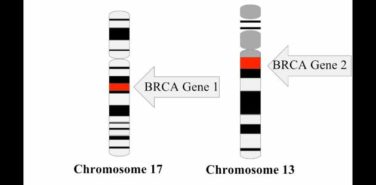EXPERT ANALYSIS AT THE SCOTTSDALE HEADACHE SYMPOSIUM
SCOTTSDALE, ARIZ. (FRONTLINE MEDICAL NEWS) – At least five episodic syndromes in children can precede pediatric and adult migraine, including infant colic, benign paroxysmal torticollis, benign paroxysmal vertigo, abdominal migraine, and cyclical vomiting syndrome, said Dr. Amy Gelfand.
Some patients progress from one syndrome to the next as they age, and then ultimately develop classical migraine, said Dr. Gelfand, a child neurologist specializing in headache and related syndromes at the University of California, San Francisco (UCSF). “I don’t know if it makes sense to think of these as migraine precursors or as age-sensitive phenotypes of migraine itself,” she said at a symposium sponsored by the American Headache Society.
Children with pediatric migraine, according to the International Classification of Headache Disorders, 3rd edition , have had at least five headache attacks lasting 2-72 hours that were untreated or unsuccessfully treated and caused nausea and vomiting or photophobia and phonophobia. The headaches also need to be characterized by at least two of the following: a pulsating quality, moderate or severe intensity, and worsening during physical activity or causing avoidance of physical activity, she noted.
Each of the following syndromes has been linked with migraine, according to Dr. Gelfand.
Infant colic
Colic affects 5%-19% of infants and is defined as frequent and excessive crying in an otherwise healthy and well-nourished baby, Dr. Gelfand said. Clinicians often assume that colic has a gastrointestinal etiology, even though probiotics typically do not help, she said. Understanding the true cause of colic is crucial because by age 6 months, at least 5.6% of affected babies have been shaken, slapped, or smothered in an attempt to stop their crying, she noted.
In a recently published meta-analysis by Dr. Gelfand and her associates at UCSF, the odds ratio for the link between migraine and infant colic was 3.2 (95% confidence interval, 1.7-7.6), even though the authors removed the study with the largest effect size. “I think that this association between the two [syndromes] is quite robust,” she commented. “I think it’s justified that infant colic is included in the episodic syndromes that might be associated with migraine. What we really need going forward are prospective cohort studies in which we enroll babies with and without colic. We would have to follow them for about a decade, but I think it’s worth doing.”
Benign paroxysmal torticollis
This syndrome typically begins at about 4-6 months of age and resolves by age 3-4 years. Affected patients have recurrent attacks of head tilt to either side, sometimes with a slight rotation, that remit spontaneously after minutes to days and are not caused by another disorder, Dr. Gelfand said.
For a diagnosis, attacks also must have at least one of the following characteristics: pallor, irritability, malaise, vomiting, or ataxia. Treatments for the syndrome “have not been well studied,” she added.
Benign paroxysmal vertigo
The syndrome is diagnosed after at least five attacks of unexpected vertigo that is worst when it begins, spontaneously resolves minutes to hours later, and is not caused by another disorder. Attacks do not cause loss of consciousness and include at least one of the following: nystagmus, ataxia, vomiting, pallor, and fearfulness, Dr. Gelfand said.
In one study , age of onset averaged 3.9 years and ranged from 1.5 to 8 years, while age at resolution averaged 5 years and ranged from 2.5 to 9.5 years. Fully 70% of patients had a family history of migraine, and 33% went on to develop migraine as adults, she said.
Like benign paroxysmal torticollis, children have a normal neurologic examination as well as normal audiometric and vestibular function between attacks.
Abdominal migraine
Children with abdominal migraine have had at least five attacks of abdominal pain with at least two of the following being true: The pain is located at the abdominal midline, is periumbilical, or is poorly localized; the child has dull, “sore” pain; the pain is moderate or severe in intensity, said Dr. Gelfand. Attacks also must include at least two of the following: nausea, vomiting, and pallor. Attacks last 2-72 hours when untreated or unsuccessfully treated, and children are symptom free between attacks, Dr. Gelfand said.
Off-label use of pizotifen, propranolol, cyproheptadine, and flunarizine can be helpful in these children, said Dr. Gelfand. Case reports also support the off-label use of sumatriptan and intravenous dihydroergotamine during attacks, she added. But evidence also suggests that medication overuse can worsen abdominal migraine, she said.
Cyclical vomiting syndrome
A diagnosis of cyclical vomiting syndrome requires at least five attacks of predictable, severe, periodic nausea and vomiting occurring at least four times an hour, lasting at least an hour and up to 10 days, and spaced at least a week apart. Children are completely asymptomatic between attacks, and as with the other syndromes, symptoms are not attributable to another disorder, Dr. Gelfand said.
Mean age of onset of cyclical vomiting syndrome is about 5 years, and attacks typically last about 3.5 days. Children may have comorbid headaches or migraine, she added.
There have been no randomized, controlled trials of treatments, but limited data support the off-label use of amitriptyline, propranolol, coenzyme Q10, L-carnitine, cyproheptadine, flunarizine, and valproate as preventives, and the off-label use of sumatriptan (especially subcutaneously) and ondansetron as acute treatments. Some data also support the off-label use of the neurokinin-1 receptor antagonist aprepitant as an acute and preventive treatment, she said.
Dr. Gelfand reported no relevant financial conflicts.



